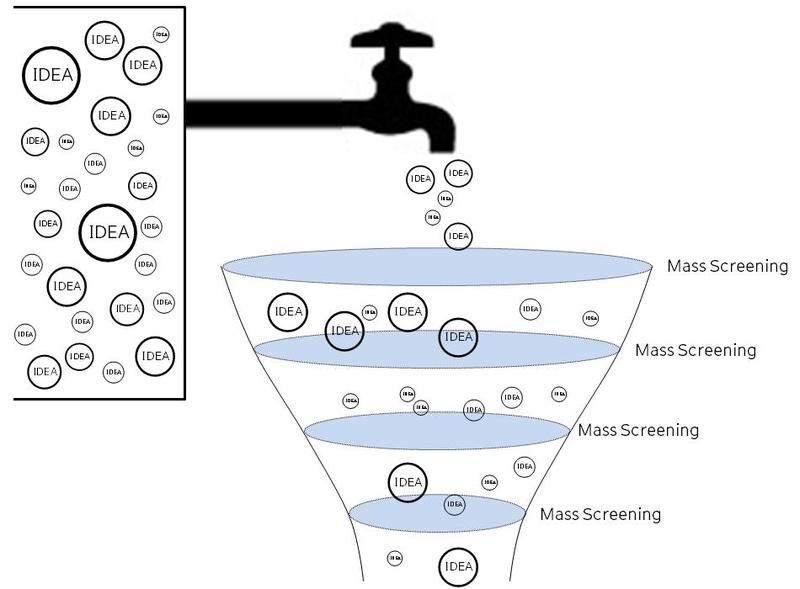Nice to meet you. I'm Akihiro Shimura from the Marketing Innovation Department at Dentsu Inc. Kansai Branch Business Development Center. While terms like "innovation" are everywhere these days, I'll be discussing a new concept (and implementation method) called "Innovation Management" – distinct from those – along with related topics in a series of articles.

"Public opinion that absorbs diversity" is the very essence of innovation decision-making.
The spread of the internet has ushered in an era where people who were previously separated by geography (time zones) or departmental boundaries can now freely connect and interact in any manner they choose. Meanwhile, within companies, responding to the changing and accelerating product lifecycles, there has been a shift towards reevaluating policies for core businesses and products. Furthermore, companies are finally beginning to focus on innovation (also referred to as the innovation pipeline) as a means to break free from this spiral.
Western companies have already established organizations (Innovation Management Offices: IMO) and innovation management tools to manage these shifts, actively initiating efforts to handle this transformation.
In this first installment, I will discuss "networked innovation" emerging within this context and "mass screening" using the core innovation management tool.
The essence of online and network-based innovation lies in "deciding and executing." It represents liberation from "black-box screening"—decision-making by a select few (though strategies to deliberately avoid visualization are also possible). Because it's possible to visualize the entire process, we can build a free, appropriately disciplined dialogue environment while eliminating the stress of "unresolved decisions" and "black boxes." Consequently, the more diverse the people involved, and the larger the number of participants, the more diversity is harnessed, and so-called public opinion is formed. In other words, "public opinion that absorbs diversity" itself becomes the decision-making process for innovation.
An approach that doesn't lead to implementation has no value
Innovation management tools were created to control the divergence and convergence of discussions involving vast and diverse groups of people. However, numerous innovation management tools already exist in the world, and the tools themselves have become a red ocean (overcompetitive market). That said, each tool has various uses and characteristics, and using them without matching them to the purpose can lead to failure.
Among the functions offered by these diverse tools, the most critical for network-driven innovation is "mass screening". To put it bluntly, in innovation management, approaches that gather, capture, or analyze crowd wisdom but fail to lead to implementation are considered virtually worthless (we do not value empty commentary). Naturally, implementation may sometimes fail or decisions may remain undetermined. However, even when decisions aren't finalized, it's crucial to document the process as data—something traditional offline-centric methods couldn't achieve. Furthermore, the screening itself in "Mass Screening" is driven by participant consensus, making everyone both an idea owner and an evaluator—a key point.

The specific algorithms used for screening are diverse, with renowned researchers worldwide constantly developing new methods. These range from simple metrics like the volume of social actions to sophisticated algorithms based on weighted criteria. The number of screening rounds may also vary, sometimes incorporating gamification elements to include multiple rounds.
However, what distinguishes "mass screening" from traditional suggestion boxes, offline frameworks, or standalone social media initiatives is that idea submission occurs simultaneously, enabling emergence. Idea owners can repeatedly reconsider, rethink, and rewrite their ideas.
Simultaneously, innovation management focuses on "execution"—like prototyping and product development. Therefore, it also builds teams around the concept of following up on ideas, creating the "implementation entity."
Thus, innovation management extends beyond merely entrusting the screening process itself to public opinion; it also entrusts the implementation of ideas to the idea owners themselves. All barriers like job roles and seniority are removed, so it frequently happens that ideas from new employees or consumers are adopted and brought to life. Considering this, it can be said to be a highly drastic and courageous undertaking.

Thus, the innovation management tool—this network (emergent environment)—is prepared. The process of carefully scooping ideas from one tank to the next, and then to the next, weaving together ideas from diverse individuals across time and space, is the key to stretching and refining ideas in open innovation.
From here, by holistically managing how ideas flow to the faucet, how the faucet is turned, how ideas are temporarily extracted from the tank, and the size of the tank itself, "network-based innovation" can be controlled with greater precision.
In future installments, we'll discuss the actual operations of the Innovation Management Office, along with the methods, challenges, and rewards of real online ideation sessions. Furthermore, as ideas progress toward commercialization, they face various hurdles. We'll gradually explore the "Equity Design" and "Intellectual Property Design" approaches needed to overcome these barriers. Stay tuned.
(Continued in Part 2 and beyond)
※Mass Screening: The process of individually collecting opinions and ideas from a large number of people, such as company employees or consumers, then narrowing them down through mutual evaluation using mathematical algorithms. Or, the collective term for this function.





